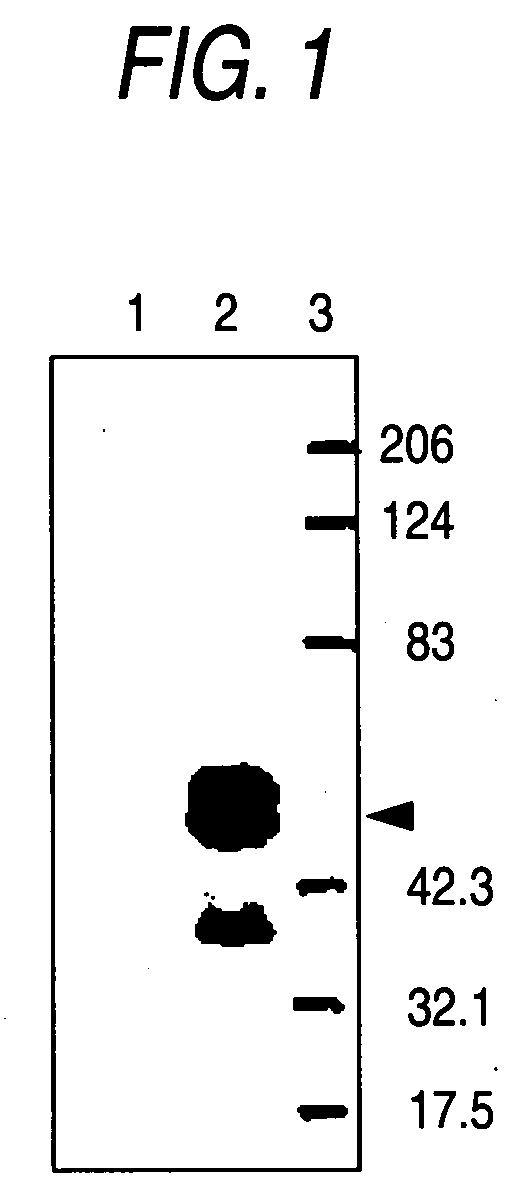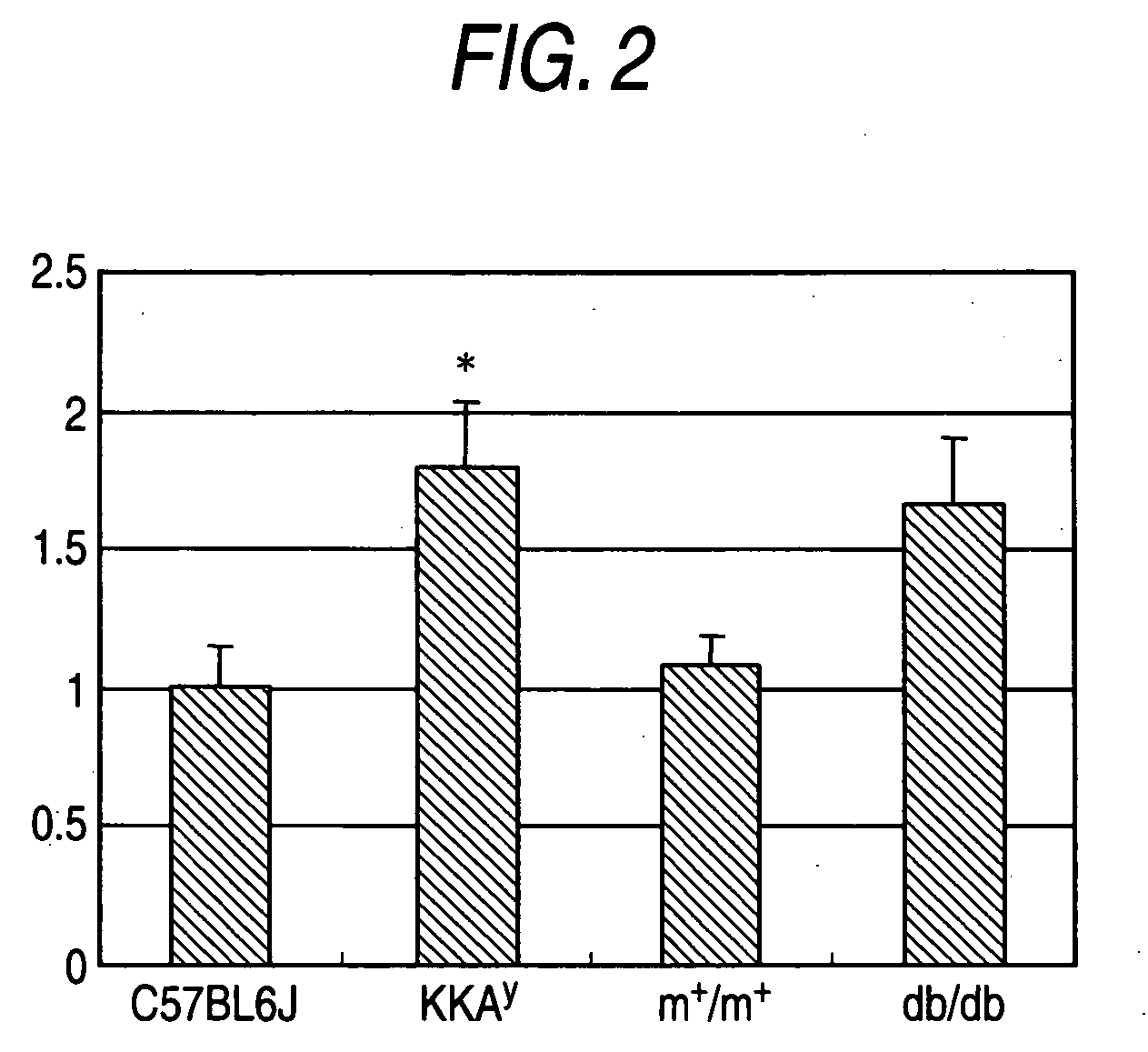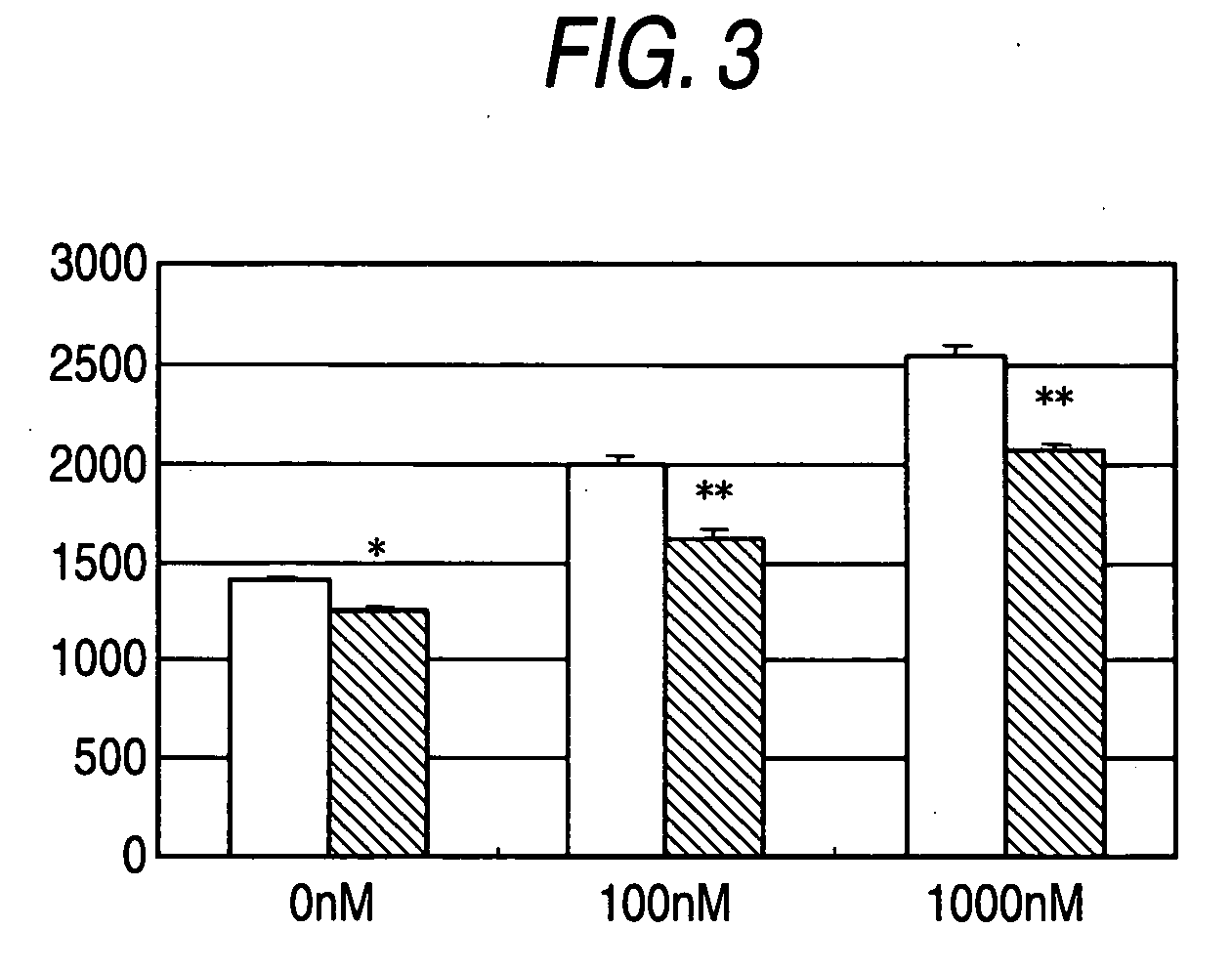Novel protein usable in screening drug improving type 2 diabetes
- Summary
- Abstract
- Description
- Claims
- Application Information
AI Technical Summary
Benefits of technology
Problems solved by technology
Method used
Image
Examples
example 1
Cloning of Gene of c-Cbl-Binding Molecule CbAP40 and Construction of Expression Vector
[0115] Using oligonucleotides represented by SEQ ID NOs:4 and 5 (for 5′ side) and those represented by SEQ ID NOs:6 and 7 (for 3′ side), as designed on the basis of the cDNA sequence encoding the full length mouse c-Cbl as Accession No. X57111 in the gene database GenBank as primers and mouse skeletal muscle cDNA as a template, PCR was carried out using DNA polymerase (Pyrobest DNA polymerase; Takara Shuzo) under conditions of thermal denaturation at 95° C. for 3 minutes, a cycle of 98° C. for 10 seconds, 60° C. for 30 seconds and 74° C. for 1.5 minutes as repeated forty times, and treatment at 74° C. for 7 minutes. DNA fragments of about 1.3 kbp and about 1.5 kbp thus prepared were individually inserted into the EcoRV recognition site of a plasmid pZErO™-2.1 (Invitrogen) to subclone the 5′ side and 3′ side of the mouse c-Cbl cDNA. Any of the gene fragments contains the ...
example 2
Preparation of Culture Cell Expressing Human CbAP40 Protein
(1) Preparation of Human CbAP40 Expressing Cell
[0119] The expression plasmid pcDNA-CbAP40 prepared above in Example 1 (4) or vacant vector (pcDNA3.1) (Invitrogen) was introduced into the 293 cell. The 293 cell was cultured in a 2 ml of the minimum essential culture medium DMEM (GIBCO) containing 10% fetal calf serum in each well in a 6-well culture plate (well diameter of 35 mm) until the cell reached 70% confluence. pcDNA-CbAP40 (3.0 μg / well) was transiently introduced into the cell by the calcium phosphate method (Graham, et al., Virology, 52, 456, 1973; Naoko Arai, Gene introduction and Expression / Analytical Method (Idensi Donyu to Hatugen / Kaisekiho), p. 13-15, 1994). After culturing for 30 hours, the culture medium was removed. The resulting cell was washed with a phosphate buffer (abbreviated as PBS hereinafter) and lysed with a lysis solution (100 mM potassium phosphate, pH 7.8, 0.2% Triton X-100) at 0.1 ml / well.
(...
example 3
Preparation of Human CbAP40 Protein
[0121] In order to insert the cDNA of human CbAP40 in a GST-fused expression vector pGEX-6P-1 (Amersham BioSciences), PCR was carried out using the primers represented by SEQ ID NOs:33 and 34 and pCDNA-CbAP40 prepared in Example 1 as a template to prepare a DNA fragment having a restriction BamHI site and a restriction XhoI site added to the 5′ and 3′ ends, respectively, of the cDNA of the CbAP40 gene. Using DNA polymerase (Pyrobest DNA Polymerase; Takara Shuzo), PCR was carried out at 98° C. (for 1 minute) and then by repeating a cycle of 98° C. (for 5 seconds), 55° C. (for 30 seconds) and 72° C. (for 5 minutes) 35 times. The DNA fragment was treated enzymatically by BamHI and XhoI to recombine the resulting fragment between the BamHI and XhoI sites of pGEX-6P-1 to thereby prepare an expression plasmid pGEX-CbAP40.
[0122] Using pGEX-CbAP40, transformation of E. coli BL21 by heat shock was carried out. The resulting transformant cell was cultured ...
PUM
| Property | Measurement | Unit |
|---|---|---|
| Electrical resistance | aaaaa | aaaaa |
Abstract
Description
Claims
Application Information
 Login to View More
Login to View More - Generate Ideas
- Intellectual Property
- Life Sciences
- Materials
- Tech Scout
- Unparalleled Data Quality
- Higher Quality Content
- 60% Fewer Hallucinations
Browse by: Latest US Patents, China's latest patents, Technical Efficacy Thesaurus, Application Domain, Technology Topic, Popular Technical Reports.
© 2025 PatSnap. All rights reserved.Legal|Privacy policy|Modern Slavery Act Transparency Statement|Sitemap|About US| Contact US: help@patsnap.com



